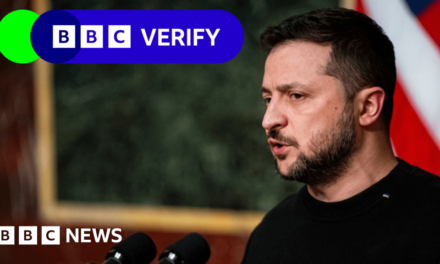
What happens in a US government shutdown?


The US is days away from its 22nd government shutdown in 50 years. Why is this happening and what will it mean for Americans?
The deadline for Congress to pass a new budget to keep funding government agencies is midnight on Saturday.
Without a deal, some key departments will no longer operate from Sunday.
What is a shutdown?
Many federal government agencies rely on annual funding approved by Congress.
Every year, these agencies submit their requests, which Congress must pass, and the president must sign budget legislation for the next fiscal year.
If agreement is not reached by the start of the fiscal year on 1 October, then there is a shutdown where all non-essential discretionary functions are discontinued.
Usually when the deadline looms, lawmakers from both parties agree on temporary funding based on the previous year’s requests.
This is called a continuing resolution and is a stop-gap way to keep agencies open until the annual budget is agreed.
Why no agreement this time?
The lower chamber of Congress, the House of Representatives, is Republican controlled but there is deep disagreement in that party about spending plans.
A right-wing faction in the House is demanding deep cuts and wants to stop further funding of the war in Ukraine.
They have voted down attempts by the party leadership, headed by Speaker Kevin McCarthy who leads the House, to bring any votes to the floor.
If moderate Republicans strike a deal with Democrats to get a measure passed in the House then this faction say they will topple Mr McCarthy as leader.
Any House budget must pass in the Democrat-controlled Senate, the upper chamber, and then be signed off by President Joe Biden.
What shuts down in a shutdown?
If no deal is struck this week then the US will have its first shutdown since early 2019.
Each agency elaborates a plan for a shutdown, identifying which government activities come to a halt, and how many people have to be temporarily on unpaid leave – called a furlough.
This group includes, for instance, processing and issuing of cards for social security payments, stopping food inspections and closing or limiting access to national parks.
It will also affect tax refunds and related administrative activities, such as income and social security numbers that may prevent you from getting other services, such as a mortgage.
What activities are unaffected?
“Essential services” – mostly related to public safety – continue to operate, with workers being required to show up without pay.
Border protection, hospital care, air traffic control, law enforcement, and power grid maintenance are amongst those.
There are other critical functions that do not get their funds from the treasury on an annual basis – social security, Medicare, and Medicaid – which are not interrupted.
What about central offices of government?
The president of the United States has a guaranteed income.
Congress is also not affected – its members are exempt and, in any case, its funding bill has already been approved.
The US Department of Justice is among those affected – with many lawyers and judges not working during a shutdown. Others are working without pay.
Criminal investigations tend to continue, but almost all federal civil cases, and immigration court cases are affected.
How common is a shutdown in US?
Quite common. There were three when Donald Trump was president, including the longest in history at 36 days which ended in January 2019.
That one happened due to disagreements over funding a wall on the Mexico border.
The Congressional Budget Office (CBO) estimated that it reduced economic output by about $11bn, including $3bn that it never regained.
Shutdowns over budgets are almost unique to US politics.
Under the US system, the different branches of government have to reach an agreement on spending plans before they can become law.
In most countries, budget votes become votes of confidence in the government itself. But because the US has equal and often divided branches of government, that isn’t the case.
Source: https://www.bbc.co.uk/news/world-us-canada-46927916?at_medium=RSS&at_campaign=KARANGA

















